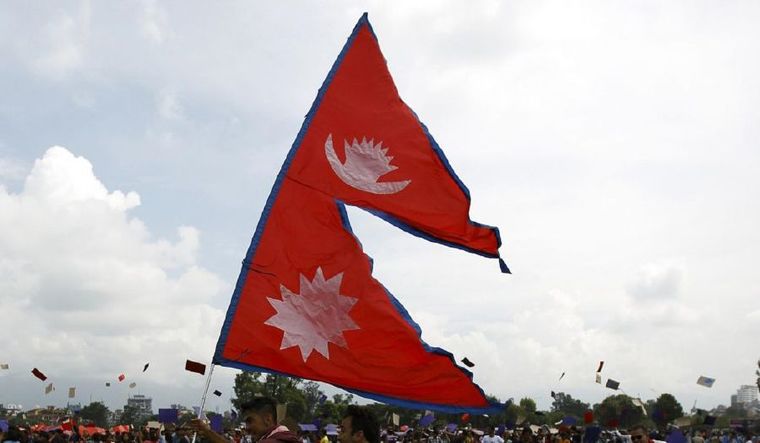When Nepal Prime Minister K.P. Sharma Oli introduced a controversial motion to dissolve the country’s Parliament, India’s response was guarded. "We have noted the recent political developments in Nepal. These are internal matters for Nepal to decide as per its democratic processes," External Affairs Ministry Spokesperson Anurag Srivastava said. "As a neighbour and well-wisher, India will continue to support Nepal and its people in moving forward on the path of peace, prosperity and development," he said.
China, on the other hand, rushed in a high-level delegation led by a vice minister of the Chinese Communist Party to prevent a split in the ruling Nepal Communist Party.
Nepal is currently in the throes of a political crisis after PM Oli, who had made several openly anti-Indian statements, dissolved the Parliament, a move seen as a power grab against his intra-party rival Pushpa Kamal Dahal 'Prachanda'.
This was not the first Chinese envoy visit either. A few days back, Chinese ambassador Hou Yanqi had met Prachanda, who has now declared open war against Oli. Leaders from the two communist parties had also held a virtual meeting during which they discussed the current political situation and shared their experience on running the party and government.
Intra-party disputes in Nepal
Oli is facing a lot of issues internally, the major issue being the growing rift between him and Prachanda. Prachanda has a tight hold over the party, while the prime minister's faction—under increasing public duress owing to COVID-19 failures—is fearful of a coup attempt. Prachanda has been critical of Oli's coronavirus handling, and has time and again spoken about lack of coordination between the government and the party, and he was pressing for one-man one position system to be followed by the NCP. Prime Minister Oli had turned deaf ear towards Prachanda's advice to form an all-party committee to monitor the country's COVID-19 situation and the government's strategy to contain it.
What does this mean for India?
India’s relations with Nepal had witnessed a steady downfall over the past year. India’s relations with Nepal witnessed one of its lowest phases ever in the year 2020 after a bitter border row, but the bilateral ties were brought on track with a series of high-level interactions at a time when the Himalayan neighbour has plunged into a deep political crisis over a power tussle within the ruling dispensation.
The bilateral ties, founded on the age-old connection of history, culture, tradition and religion, came under strain after Defence Minister Rajnath Singh inaugurated an 80-km-long strategically crucial road connecting the Lipulekh pass with Dharchula in Uttarakhand on May 8.
Nepal protested the inauguration of the road claiming that it passed through its territory. Days later, Nepal came out with a new map showing Lipulekh, Kalapani and Limpiyadhura as its territories.
After Nepal released the map, India reacted sharply, calling it a 'unilateral act' and cautioning Kathmandu that such 'artificial enlargement' of territorial claims will not be acceptable to it. India said that Nepal's action violated an understanding reached between the two countries to resolve the boundary issues through talks.
The bilateral exchanges that had stalled due to the bitter boundary dispute and the COVID-19 pandemic were reset in the later part of the year with a series of high-level visits, as New Delhi emphasised that it sees itself as the Himalayan nation's 'foremost friend' and development partner.
A few months back, PM Oli even indirectly claimed that India was trying to intervene in a coup attempt against him.
At the same time, China's political profile in Nepal has been on the rise in the recent years with billions of dollars of investments under Beijing's multi-billion-dollar Belt and Road Initiative (BRI), including the building of the Trans-Himalayan Multi-Dimensional Connectivity Network.
New Delhi’s priority will be to protect the country’s strategic interests and not let Nepal slip into China’s sphere of influence. They will have to continue with the earlier parlays, which included the visit of RAW chief Samang Goel, Chief of Army Staff General M.M. Naravane, Foreign Secretary Harsh Vardhan Shringla, in the earlier parts of the year.
Nepal is a critical buffer between India’s borders and Chinese-controlled Tibet. For China, Nepal was a country that provided a crucial entry point—a gateway—to Tibet and it wanted to ensure that Nepal with its significant Tibetan populace was always within its embrace, and did not become a frolicking ground for anti-China rebels. The push-and-pull game in Kathmandu between the two Asian giants will continue for the time being.






